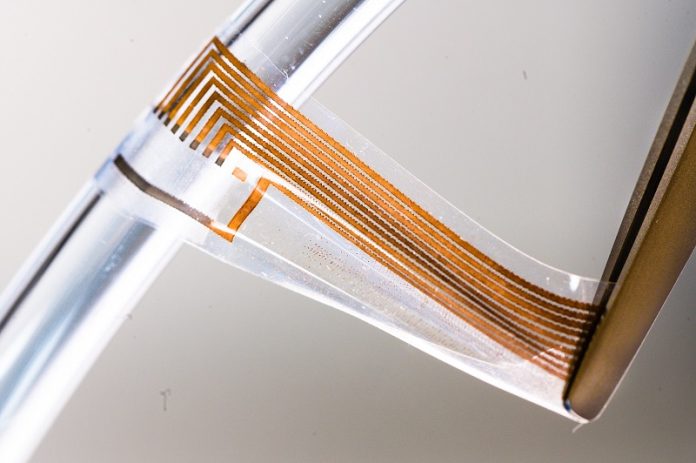
Scientists at Linköping University in Sweden have made a significant breakthrough by creating gold nanowires and developing soft electrodes that can connect to the nervous system.
These new electrodes are as soft as nerves, stretchable, and conduct electricity well, making them promising for long-term use in the body.
Imagine having “nerves of gold”—in the future, this might be possible! These gold-based soft interfaces could connect electronics to the nervous system for medical purposes.
This technology could help treat conditions like epilepsy, Parkinson’s disease, paralysis, and chronic pain. However, linking electronics with the brain or other parts of the nervous system is challenging.
Typically, metals are used in electronics, but they are hard and rigid, unlike the soft, jelly-like texture of the nervous system. To get accurate signal transmission, the electrodes need to be very close to the nerve fibers.
However, because our bodies are always moving, it’s tough to maintain close contact between something hard and something soft and fragile.
Professor Klas Tybrandt from the Laboratory of Organic Electronics at Linköping University explains that researchers want to create electrodes that are both highly conductive and mechanically soft like the body.
Recent studies show that soft electrodes cause less damage to tissues compared to hard electrodes.
In their latest study, the researchers developed gold nanowires that are a thousand times thinner than a hair. They embedded these nanowires in a stretchy material to make soft microelectrodes.
Their paper, “Stretchable tissue-like gold nanowire composites with long-term stability for neural interfaces,” is published in the journal Small.
Klas Tybrandt and his team succeeded in making a new, better nanomaterial from gold nanowires combined with very soft silicone rubber. This resulted in a conductor that has high electrical conductivity, is very soft, and is made of biocompatible materials that work well with the body. Silicone rubber, used in medical implants like breast implants, along with gold and platinum, common in medical devices, are part of these soft electrodes.
Creating long, narrow gold nanostructures has been very difficult, posing a significant obstacle. However, the researchers found a new way to manufacture gold nanowires by using silver nanowires as a template. Silver is excellent for creating the kind of nanowires they needed but is chemically reactive and can break down, releasing toxic silver ions.
Laura Seufert, a doctoral student in Tybrandt’s research group, discovered a new method. Instead of starting with gold, she used a thin nanowire made of pure silver and grew gold around it.
Then, she removed the silver, leaving a material with over 99% gold. This clever trick helped them overcome the challenge of making long, narrow gold nanostructures.
In collaboration with Professor Simon Farnebo from the Department of Biomedical and Clinical Sciences at Linköping University, the researchers demonstrated that the soft and elastic microelectrodes could stimulate a rat nerve and capture signals from it.
For soft electronics to be embedded in the body, the material must last a long time, ideally for life. The researchers tested the stability of the new material and found that it would last at least three years, better than many existing nanomaterials.
Now, the research team is working on refining the material and creating even smaller electrodes that can come into closer contact with nerve cells. This exciting development in neural implants could pave the way for new treatments and improved quality of life for many people.



